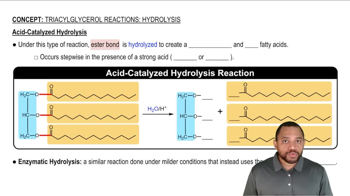Show how the following transformations may be accomplished in good yield. You may use any additional reagents that are needed.
(c) benzoic acid → phenyl cyclopentyl ketone
(d) 1-bromohept-2-ene → oct-3-enal

 Verified step by step guidance
Verified step by step guidance Verified video answer for a similar problem:
Verified video answer for a similar problem:

